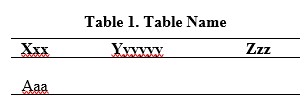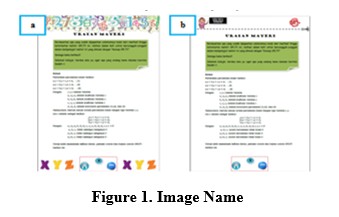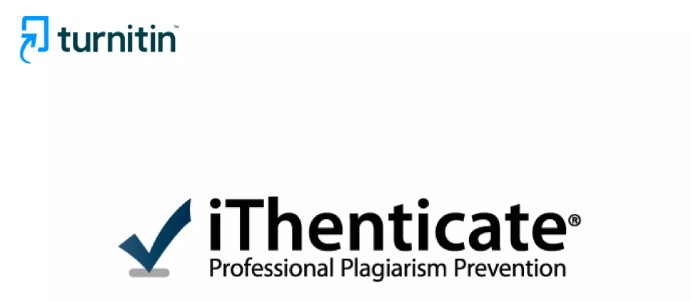Author Guidelines
The author guidelines, which are the result of research or equivalent research results in the Jurnal Pendidikan Matematika, are from (i) the title, (ii) name and affiliation of the author, (iii) abstract, (iv) introduction, (v) method, (vi) results and discussion, (vii) conclusion, (viii) acknowledgements (if there are), and (ix) references, with the following details:
TITLE: A maximum of 14 words as a summary or a combination of free variables against a bound variable or other sets of words describing the relationship between variables that are observed. Titles are also listed in the English version. If The article is presented in English then the title is written in English only
NAME and AFFILIATE AUTHOR: The name is written without a title, and the main author is the first author and author of correspondence. The affiliate author is written in full, and e-mail is listed only for correspondence writers.
ABSTRACT: Abstracts in English are written using Times New Roman-10. The spacing between lines is 1 space. The abstract contains 1150–200 words and only consists of oneparagraph, containing background, objectives, methods, results, and conclusions. If the article is presented in English, then an Indonesian abstract is not required.
INTRODUCTION: Contains the background, rationale, and urgency of the research. References (literature or relevant research) should be included in this section in relation to the justification of the uresearch's urgency the emergence of research problems, alternative solutions, and the chosen solution. The wcitation of the source in the text must clearly indicate the author's name, followed by the year of publication and the page number where the information can be found For example: ... research results show that more than 70% of students are unable to recognise authentic problems... (Salim, 2018). The introduction is written in Times New Roman 12 upright, with 1onespace. Each paragraph begins with a word that protrudes about 1 cm from the left edge of each column. Problems and objectives, as well as the usefulness of the research, are written narratively in paragraphs; no special subheadings are needed. Similarly, operational definitions, if necessary, are also written narratively.
The introduction also contains the state of the art (review of literature reviews or previous studies) with the aim of justifying/reinforcing the statement of novelty or scientific contribution and originality of the article. References to articles in this journal are a maximum of the last 10 years from primary sources to strengthen justification of the originality or contribution of this research title. Before writing the purpose of the study, there must be a gap analysis or a gap statement (originality) or a novelty contribution statement clearly and explicitly, or what is the difference/uniqueness of this research compared to previous studies, also in terms of the importance of this research being carried out after that, and then write the research objectives in this article straightforwardly and clearly.
METHODS: Contains research type, time and place of research, target/target, research subject, procedures, instruments and data analysis techniques, and other things related to the way of research. Targets/objectives, research subjects, procedures, data and instruments, and data collection techniques, as well as data analysis techniques and other matters relating to the way the research can be written without sub-subchapters. Paragraph text stuffing on methods adapted to the type of research
RESULTS AND DISCUSSION: Research results are presented in graphical, tabular, or descriptive form. Analysis and interpretation of these results is required before they are discussed. The data presented is not raw data but data that has been analyzed. The presentation of research results in tables and figures needs to be given an explanation/review but not discussed in detail. Tables are written in the middle or at the end of each text description of research results/objectives. If the width of the table is not enough to be written in half a page, it can be written on a full page. The title of the table is written from the left, centered, and all words begin with uppercase letters, except conjunctions. If more than one line is written in single space. For example, see Table 1 below.

The results in the form of images, or data made into images/schemes/graphs/diagrams, also follow the existing rules; the title or name of the image is placed below the image, from the left, and spaced 1 space from the image.

The discussion focuses on linking the data and the results of its analysis with the problem or research objectives and the broader theoretical context. It can also baddress the question of why the facts appear as they doin the data. The discussion is written attached to the data discussed. The discussion should not be separated from the data discussed. The discussion made must be supported by real and clear facts, and the element (what else?) of whether there is conformity or contradiction with the results of other people's research needs to be explained as well.
CONCLUSION: The conclusion can be a generalisation of the findings according to the research problem; it can also be a recommendation for the next step. Conclusions are written in paragraph form, not in item list/numbering form. Suggestions can be in the form of input for future researchers or implicative recommendations from the research findings.
ACKNOWLEDGEMENTS: Acknowledgments may or may not be included here.
REFERENCES: Written in single space, between the bibliography is spaced 1 space. Writing a bibliography using the American Psychological Association (APA) Style version 7. The nbibliography must include at least 20 reference sources, composed of 80% primary references—such as journals, research reports, and proceedings papers—and 20% secondary references, including books theses, dissertations, and internet sources. Referenced journal references come from international journals and accredited national journals. Use the MENDELEY reference manager to create a bibliography.






